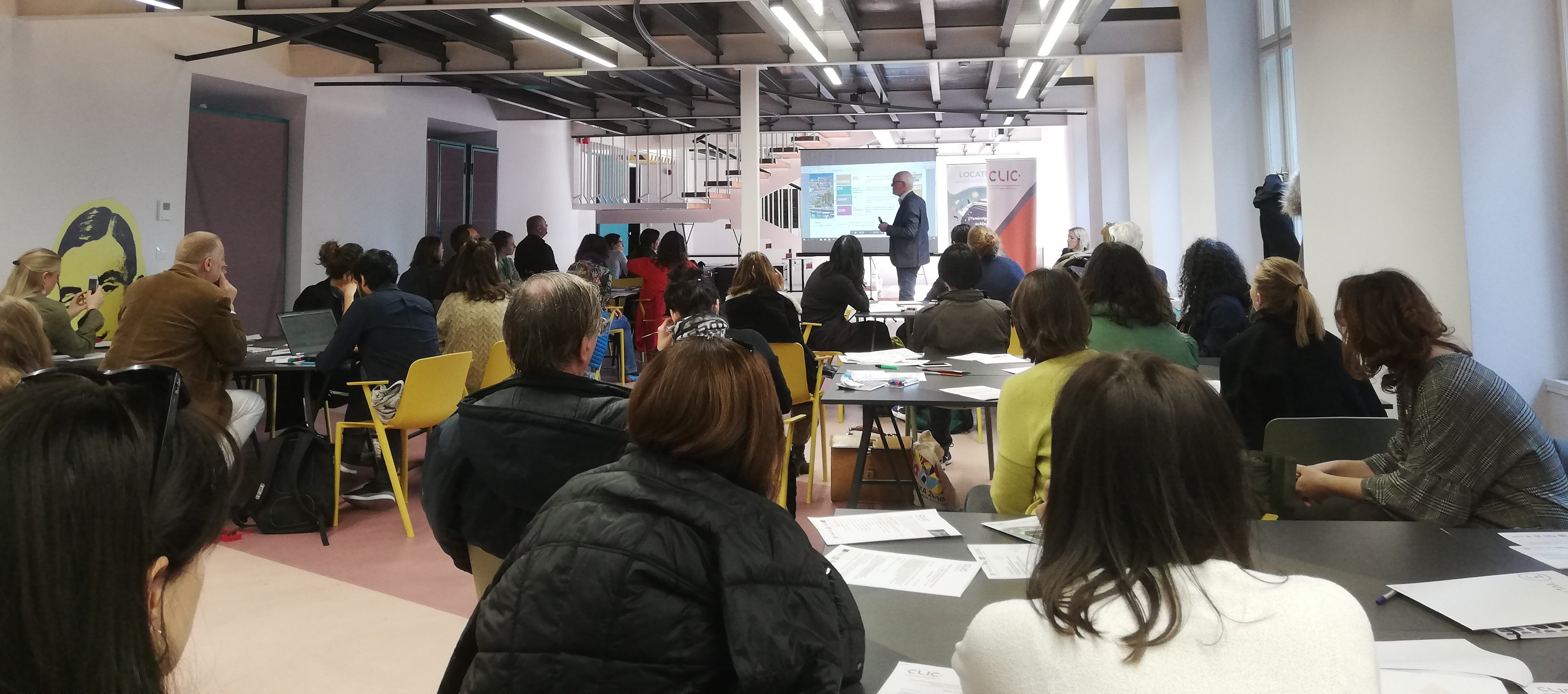
28Mar
Historic Urban Landscape workshop Rijeka
Within the CLIC project, the Historic Urban Landscape (HUL) workshops aim at involving stakeholders in reflecting on good practices, identifying barriers and bottlenecks, and brainstorming solutions to number up the practices of cultural heritage adaptive reuse and contribute to the transition towards circular cities.
The CLIC pilot city of Rijeka hosted the third HUL workshop on March 28th, 2019. During the HUL workshop, barriers to cultural heritage adaptive reuse were identified specially focusing on the context of Rijeka. The stakeholders also proposed solutions to overcome these barriers.
The HUL workshop took place right after the CLIC Midterm conference entitled “Heritage Adaptive Reuse and Circular Economy” which provided an overview of projects and experiences with regard to these themes in the city of Rijeka and elsewhere. During the Conference, the stakeholders also participated in site visits to several reuse projects within the city.
Throughout the HUL workshop, the stakeholders critically assessed good practices presented during the CLIC Midterm Conference and related to their own experiences. The HUL workshop format counts six rounds of round-table discussions. Each round, the stakeholders participated in discussions addressing barriers and solutions from the perspective of one of the six critical steps of the HUL approach: (i) mapping resources, (ii) reaching consensus, (iii) assessing vulnerability, (iv) integrating into the city development framework, (v) prioritizing actions, and (vi) establishing local partnerships. The barriers and solutions addressed different scales of reuse; for instance, “#RiHub” for the case study chosen by Rijeka; “#Rijeka” for the city of Rijeka; and “#Elsewhere” for contributions referring to elsewhere or other scale of analysis (e.g. national level).
Below are presented some of the stakeholders’ contributions each addressing a different HUL adaptation step:

Mapping resources
Barrier: difficulty in having a vision for the future. Complex history, it is difficult to prioritize, it is difficult to choose the vision for the future
Solution: planning and develop the vision for the future

Reaching consensus
Barrier: variety of conflicting levels for decision making also at different scales
Solution: planning process that identifies implications of different actors in the decision-making

Assessing vulnerability
Barrier: rural area redevelopments: limitation of financial capacity and depopulation
Solution: (a) financial tools to encourage people to move towards rural areas: grants, giving buildings, reducing taxes, … (b) transform into a place which is needed by the community, e.g. cultural centre, kindergarten, … instead of museums. Example: the Fairy tale initiative in Ogulin

Integrating into the city development framework
Barrier: issues concerning property ownership
Solution: better public regulations to allow a faster implementation of projects

Prioritizing actions
Barrier: prioritization based not only on economic resources (e.g. tourism) but also on citizens/stakeholders engagement, letting people “use” spaces
Solution: (a) Portfolio of assets + actions; (b) grassroots should facilitate the process of defining or redefining of priorities

Establishing local partnerships
Barrier: accessibility may be improved by partnership with locals + transports
Solution: more walkable Rijeka. Partnerships among organizations gathering seniors and places where parents and children gather, transport authorities, schools…
The identified barriers and solutions also entail tools which were classified according to four categories introduced by the HUL toolkit: (i) community engagement tools, (ii) knowledge and planning tools, (iii) regulatory systems, and (iv) financial tools (Figure1).

Civic engagement tools
Consultations, dialogues, debates, informative sessions, education kits, participation platform/website etc.

Knowledge and Planning tools
City vision, value assessment, portfolio of assets, participatory urban design tools, platforms and repositories, etc.

Regulatory systems
Mapping guidelines, housing policy, PPP framework, planning regulation (review), cooperative ownership and management etc.

Financial tools
Crowdfunding, funding, public-private partnerships, grants, tax incentives, concessions, etc.
To conclude the HUL workshop, the stakeholders participated in an interactive poll expressing their opinion on a selection of barriers that they selected during the round-table discussions.
The participants of the HUL workshop had been representatives of a diverse spectrum of stakeholders, institutions, and organizations: various departments within the municipality of Rijeka, cultural institutions, the Rijeka Port Authority, SMEs, NGOs, and the CLIC consortium. Regarding this diverse representation at the workshop, it contributed extensively to the cross-pollination among participants, the co-creation of solutions, and the mainstreaming of the HUL approach.
A big THANK YOU to the local stakeholders and the colleagues of the CLIC project who actively took part in the HUL workshop. The workshop was designed and coordinated by the Eindhoven University of Technology and organized in collaboration with the municipality of Rijeka (RIJ) and University of Nova Gorica (ETCAEH).
Download CLIC Project presentations:
- HUL workshop introduction – Nadia Pintossi and Deniz Ikiz Kaya
- HUL workshop conclusion – Nadia Pintossi and Deniz Ikiz Kaya
- Towards a circular city model through the re-use of the cultural heritage – Luigi Fusco Girard
Icons from https://icons8.com




